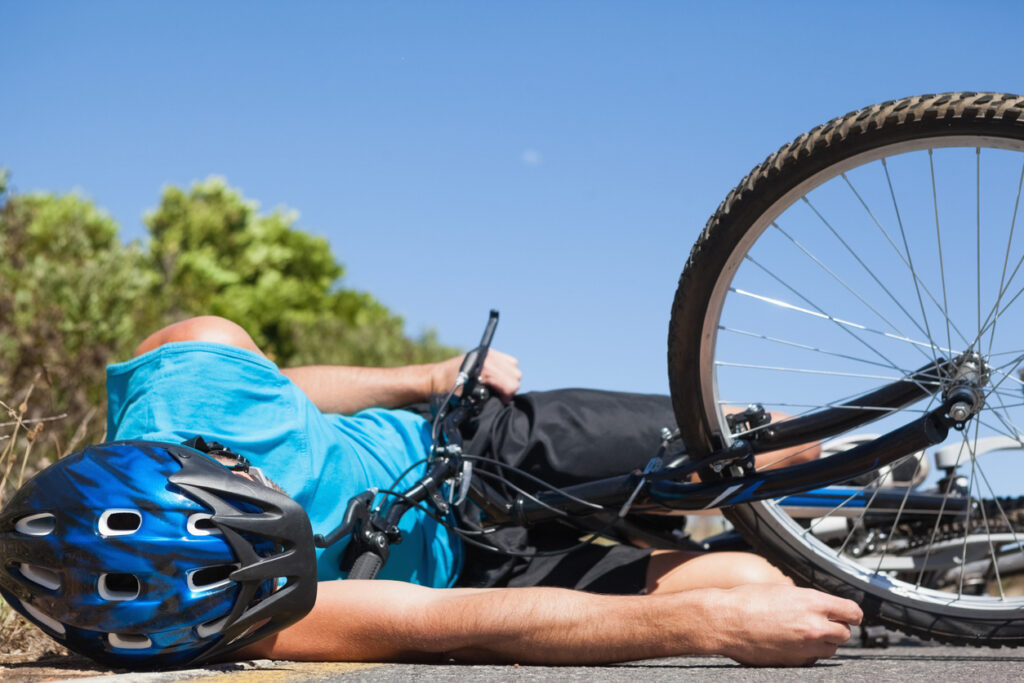Bicycle Accidents
Bicycle accidents can result in serious injuries due to the vulnerability of cyclists compared to motor vehicle occupants. These accidents can be caused by negligent drivers, road hazards, and defective equipment. Victims of bicycle accidents often face significant physical, emotional, and financial challenges, and personal injury law provides a means for these victims to seek compensation for their losses.

Common Causes
- Driver Negligence: Many bicycle accidents occur due to drivers failing to see cyclists or not yielding the right of way.
- Distracted Driving: Drivers using mobile phones, eating, or engaging in other distractions can fail to notice cyclists.
- Speeding and Reckless Driving: Excessive speed and aggressive driving behaviors increase the risk of accidents.
- Impaired Driving: Alcohol or drug impairment by drivers significantly increases the risk of accidents.
- Road Hazards: Potholes, debris, poor road design, and other hazards pose a significant threat to cyclists.
- Dooring: When a parked car’s door is opened into the path of an oncoming cyclist.
- Defective Bicycle Equipment: Mechanical failures, such as brake or gear malfunctions, can lead to accidents.
Types of Injury
- Head and Brain Injuries: Traumatic brain injuries (TBIs), concussions, and other head trauma, even with helmet use.
- Spinal Cord Injuries: Can lead to partial or complete paralysis, depending on the severity and location of the injury.
- Fractures and Broken Bones: Common in high-impact collisions and falls.
- Road Rash: Severe skin abrasions that occur when a cyclist is thrown from the bicycle and skids across the pavement.
- Internal Injuries: Damage to internal organs, which can be life-threatening if not treated promptly.
- Lacerations and Contusions: Cuts and bruises from contact with the ground, vehicles, or other objects.
- Emotional and Psychological Trauma: Post-traumatic stress disorder (PTSD), anxiety, and depression can result from the trauma of the accident.
Legal Considerations
- Establishing Liability: To win a personal injury claim, the victim must prove that another party was at fault. This involves demonstrating that the other party breached their duty of care and that this breach caused the accident and resulting injuries.
- Comparative Negligence: In some jurisdictions, if the cyclist is found partially at fault, their compensation may be reduced by their percentage of fault.
- Helmet Laws: Compliance with helmet laws can impact the outcome of a personal injury claim, as failure to wear a helmet may be considered contributory negligence.
- Statute of Limitations: There is a limited time period within which a bicycle accident claim must be filed, typically ranging from one to three years from the date of the accident.
Evidence Collection
- Accident Reports: Official documentation of the accident, including statements from drivers, passengers, and witnesses.
- Medical Records: Detailed accounts of the injuries sustained, treatments received, and long-term prognosis.
- Accident Scene Photos: Visual evidence of the scene, vehicle damage, road conditions, and any relevant road hazards.
- Witness Statements: Testimonies from individuals who witnessed the accident.
- Expert Testimony: Opinions from accident reconstruction experts, medical professionals, and other specialists.
Insurance and Settlements
- Bicycle Insurance: Comprehensive coverage can help cover medical expenses, property damage, and other losses.
- Uninsured/Underinsured Motorist Coverage: Provides compensation if the at-fault party lacks sufficient insurance coverage.
- Liability Coverage: The at-fault party’s insurance may cover the victim’s medical expenses, lost wages, and pain and suffering.
- Property Damage Claims: Compensation for damage to the bicycle and other property.
Damages and Compensation
- Medical Expenses: Covers hospital bills, surgeries, medications, rehabilitation, and future medical care.
- Lost Wages: Compensation for time missed from work due to the injury, including future lost earning potential if the injury results in long-term or permanent disability.
- Pain and Suffering: Non-economic damages for physical pain, emotional distress, and reduced quality of life.
- Property Damage: Repair or replacement costs for the victim’s bicycle and other damaged property.
- Punitive Damages: In cases of gross negligence or intentional misconduct, punitive damages may be awarded to punish the wrongdoer and deter similar behavior.
Why Legal Representation Matters
Navigating the aftermath of an accident can be complex and stressful. An experienced personal injury attorney can:
- Provide Legal Advice: Offering guidance on the legal process and what steps to take next.
- Gather Evidence: Collecting and preserving crucial evidence to build a strong case.
- Negotiate with Insurers: Handling communications and negotiations with insurance companies to secure fair compensation.
- Advocate in Court: Representing the victim’s interests in court if a settlement cannot be reached.

